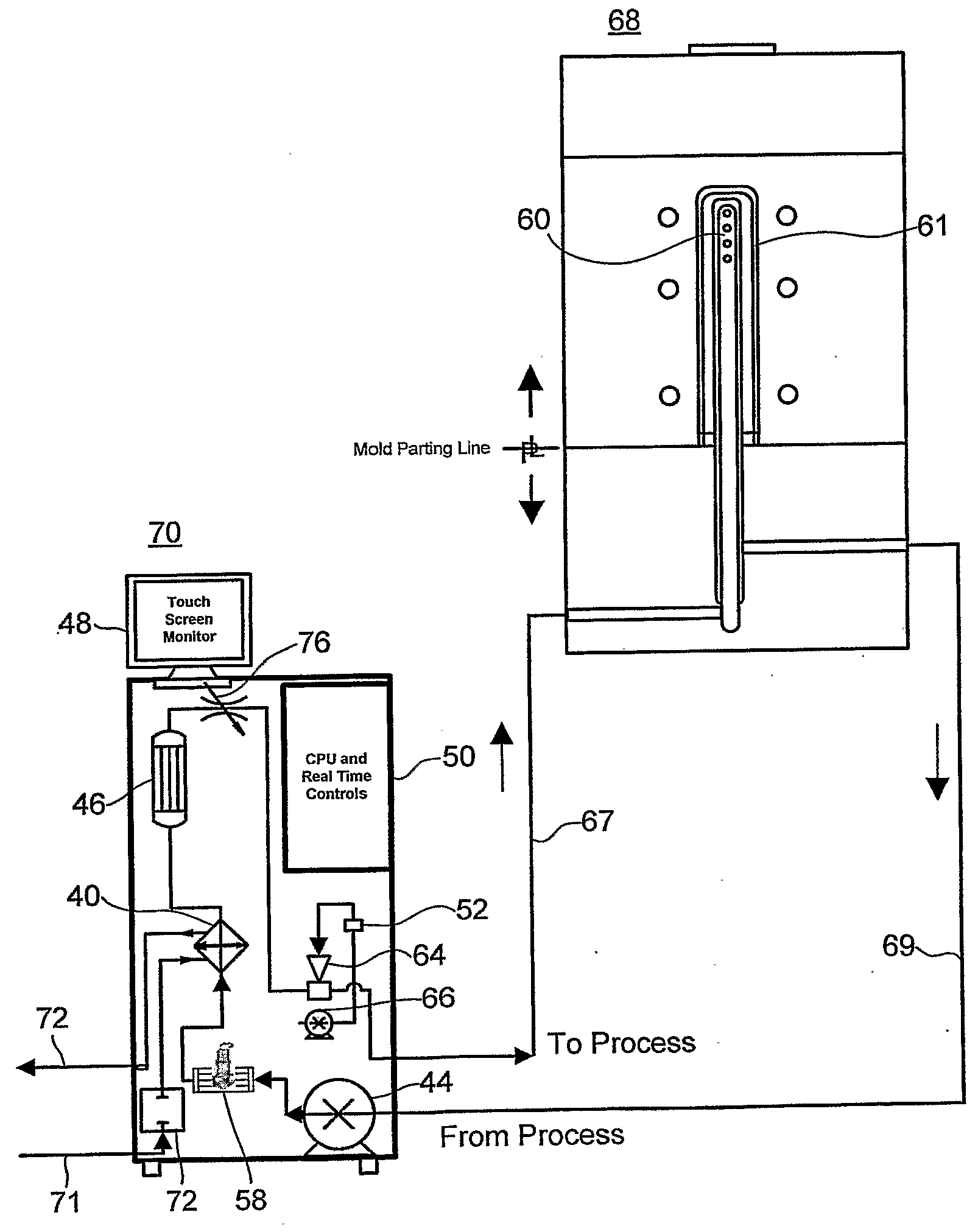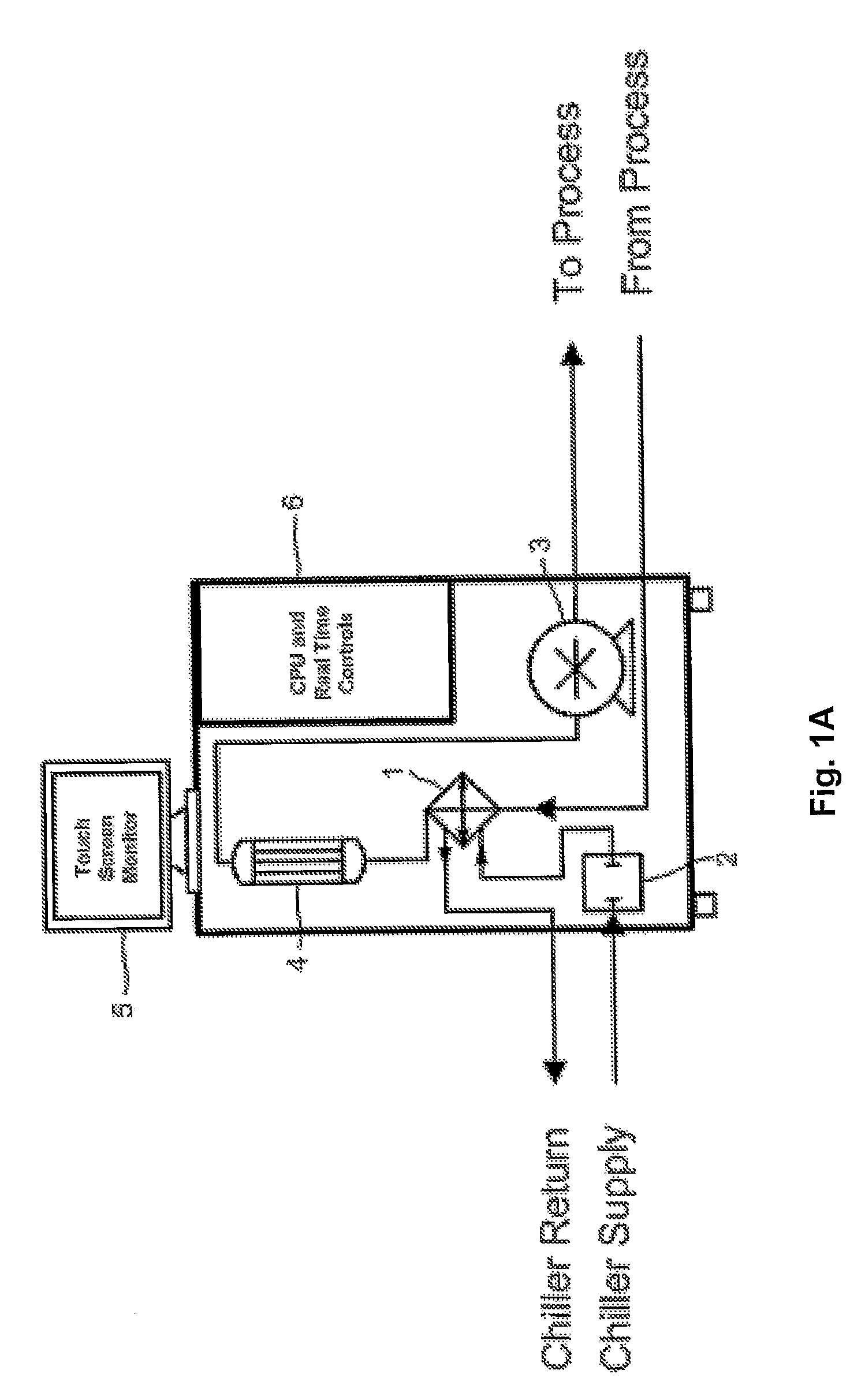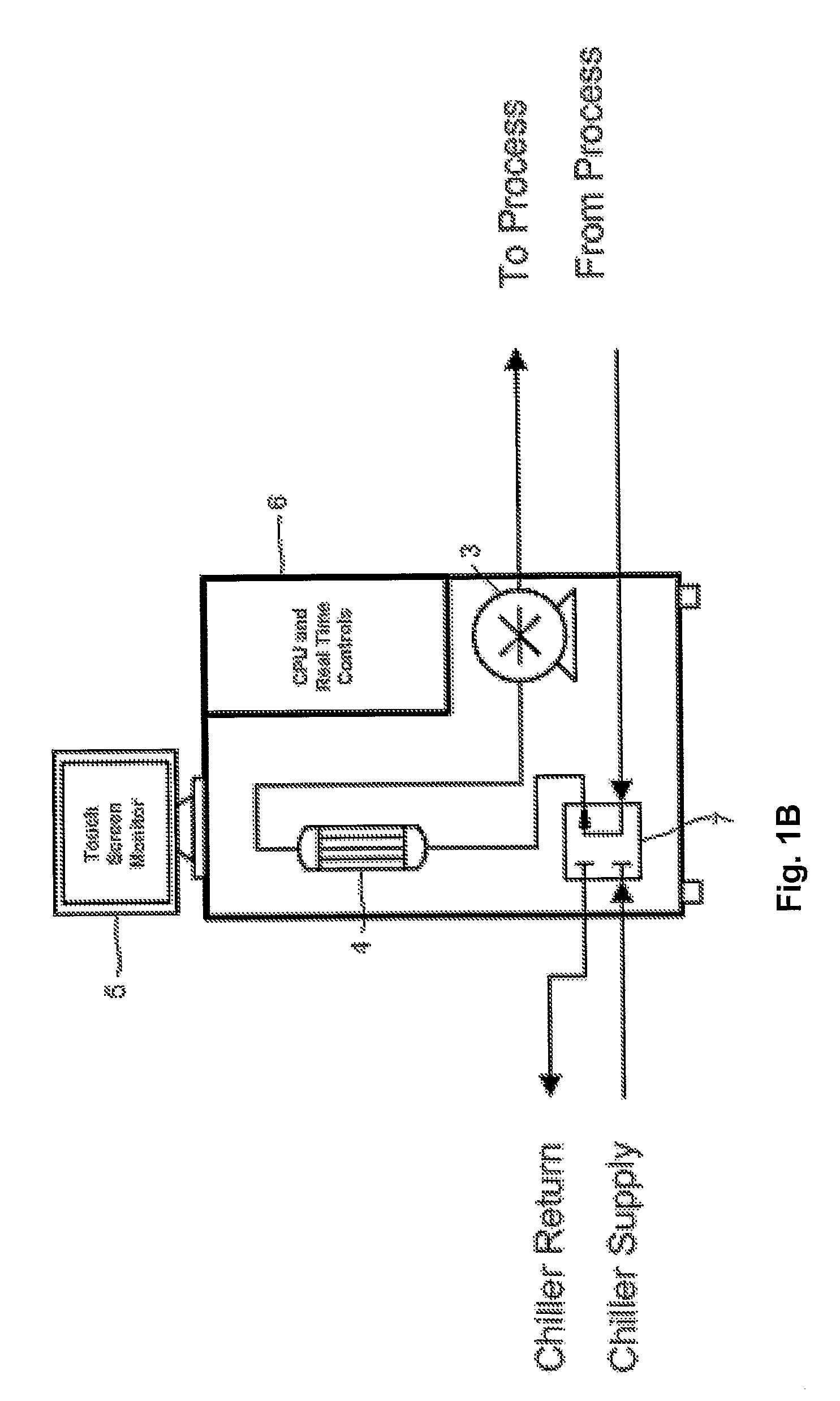[0014]The prior art provides several techniques for restoring the return line temperature or post process temperature to a supply line temperature or temperature that will provide a surplus of heating or
cooling capacity to the control loop and hence to the molding
machine. However, the effectiveness of these techniques varies considerably based on system design, component selection, and overall operating conditions, all of which limits the precision and reliability of the
temperature control process. In one respect, the invention relates to the control the temperature and volume of fluid in the temperature
control system, in real time or near real time, shifting the basis of control to the precision delivery of
thermal energy to the molding
machine in a manner that compensates for the lack of precision in a mainly temperature
control system.
[0017]It is therefore a goal of the invention to provide a more energy efficient circulator by eliminating the slippage losses encountered in a
centrifugal pump. It is well known within
centrifugal pump manufacturing companies that centrifugal pumps add heat to the pumped media in the form of viscous heat dissipation caused by churning the liquid when the fluid is spun centrifugally out of the pump. Moreover the pump delivery in a
centrifugal pump is not linear and is always spoken of as a curve where the highest volumetric delivery is called the “nominal rating” of the centrifugal pump. In a
positive displacement pump there is no slippage as with a centrifugal pump because these pumps use positive displacement gears, rotors or pistons to move the flow. A positive displacement pumps' volumetric delivery curve is flat or linear. The slippage in a centrifugal pump requires a larger pump and motor to be used to get the same volumetric
throughput. For example, in one
closed loop circulator something on the order of a seven
horsepower motor is required to achieve a delivery pressure of 50 psi. A circulator in accordance with the invention can use a smaller, more efficient
servo motor and
positive displacement pump to achieve the same 50 psi pressure with the same
resultant volumetric
throughput. In molds where the cooling channels are seen to be small and restricted the flow rate will be substantially reduced. The large seven
horsepower motor and pump will be generating little actual flow and there will be substantial heating of the
cooling fluid by the centrifugal pump itself.
[0018]Further, the additional heat imparted to the cooling media by a centrifugal pump has to be removed by a central chilling system, adding a further waste, cost or inefficiency to conventional systems. It is a goal of the invention to reduce or eliminate this source of inefficiency and to consume less power to achieve the required flow rate.
[0019]In one aspect, a circulator of the invention can be set up to operate at low
energy consumption, metering
coolant using the central
chiller pumping system for energy force. The
servo motor and fixed displacement pump perform merely to regulate the flow. This type of pump does not chum the
coolant and thereby generate heat which must be removed. Because a circulator in accordance with the invention is not imparting excess work-heat to the fluid, the central chilling system can be smaller and more energy efficient.
[0020]A circulator according to some aspects of the invention allows for
programming behavior that is not possible with a conventional,
constant speed motor / centrifugal pump arrangement. When an electronic, servo motor driven, positive-displacement pump is controlling the fluid flow based on rotational position, desirable profiles of flow or flow rate versus time can be generated and dynamically adjusted or controlled in real
time based on sensor data to control the mold, die or injection
barrel thermal condition. In conventional circulators, supply and return line pressure variations and
voltage supply line variations are not compensated for and these fluctuations can cause change in volumetric
throughput. The result is that even if the
coolant loop temperature is held precisely constant at the sensor location, the rate of cooling flow or BTU's / second delivered in the mold may be much different. According to one embodiment of the invention, the circulator by means of its electronic, servo motor driven, positive-displacement pump is able to precisely meter this
energy rate of coolant to the mold, die or injection barrel, thereby providing an
improved method of temperature control for molding processes.
[0026]With the ability to tailor a flow delivery profile, the curve can be adjusted, for example, to be delivered with a high or low peak at any point in the molding cycle. Using a sensor in the mold wall, die wall or injection barrel wall, a time /
temperature curve can be generated that will reflect the mold cavity temperature each cycle of the molding machine. This time /
temperature curve is then converted into a
heat energy / time delivery curve or thermal profile tailored to the cooling or heating requirements of the process. The delivery of the thermal profile can be advanced in time ahead of the peak measured temperature or general measured temperature profile to account for the
time lag or
hysteresis effects required to accomplish the higher
thermal transfer between the machine
mass and the fluid for
optimal control in the mold, die or barrel.
 Login to View More
Login to View More 


